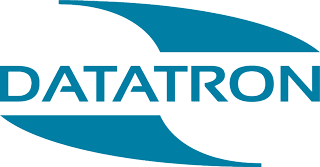How a document management system can bolster your HR policies
HR policies are crucial for any business; they give guidance on a range of employment issues, such as sick leave and disciplinary actions. In doing so, they offer consistency and transparency for all your staff.
They also foster ‘trust, fairness, and inclusion by outlining the responsibilities of both employer and employee’, according to the CIPD. They can positively impact employee engagement as well as your brand and reputation.
However, this is hindered when companies are overly reliant on paper-based processes. These manual processes can result in:
- Policies that are difficult for managers and employees to find.
- Different, outdated versions of policies and forms.
- Errors and a lack of standardisation.
- The inability to check the status of documents or forms efficiently.
Too often, these challenges can become bigger, organisation-wide issues. To avoid this, you’ll need to rethink your document management processes.
A document management system ensures your documents are accessible, secure, and current through efficient storage, sharing capabilities, and automation. Let’s discuss how this can improve your HR policies.
6 ways a document management systems benefits HR
A document management system digitally stores company documents. Employees then use a web portal to access the information they need. It allows the processes around those documents to be more efficient and standardised through automation.
But how does implementing one tool live up to a promise to bolster HR policies?
- Improve onboarding and employee retention
Employees expect your company to exceed the offerings of their current employer. Onboarding is their first indication of whether your company meets their expectations and whether they want to stay.
A document management system drives consistency between recruitment and onboarding. It allows you to:
- Store HR documents in a central location.
- Keep role, policy, and training information current and consistent.
- Use automation to improve recruitment workflows.
This ensures your HR department communicates well and consistently about company policy to prospective employees and newcomers. In turn, this will improve your chances of retaining talent.
- Track employee training and development goals
It’s HR’s goal to provide learning opportunities, motivate employees, and evaluate progress. But, of course, this comes with challenges. People have varied goals and work at different paces.
As of 2021, investment in technology for training and development is up, with more companies making use of online courses and digital content to support a sprawling workforce.
Naturally, this shift requires technologies - such as document management systems - that allow HR to log work performance, track completed training, and record milestones.
- Monitor issues and disciplinary actions
Employee performance or conduct issues are varied and often complex. They require weeks, if not months, of important meetings with multiple parties that must be recorded.
In a document management system, you can monitor issues, schedule assessments, maintain records and automatically remove or archive expired warnings. This helps to maintain consistent handling even across diverse disciplinary issues.
- Maintain and nurture company culture
HR decides what words best communicate the values of your company. They’re also responsible for maintaining important company culture documents and making them accessible to your employees.
A document management system gives your employees access to those policies so they can become familiar with your culture and lead by example. HR can also review what policies are accessed - and how often - to ensure the message is being received. With policies accessible and up-to-date, it is more likely for policy to become practice.
- Support staff on leave
Formal, written policies protect both employees and the company when employees face minor and chronic illnesses or other medical issues. At the same time, they allow for the nuance of each employee’s needs and role.
With a document management system, HR can support staff on leave by scheduling check-ins with employees who are unwell or have returned to work. Relevant policy is also kept readily available for employees who need to refer to it.
- Simplify record retention and security
Retention guidelines under the Data Protection Act (2018) specify a required retention period of six years for payroll and salary records. Other types of employee records are governed by both statutory and recommended retention periods under the law. No information is to be kept longer than necessary.
Document management software has access management functions and automated retention settings. Retention policies are honoured without the need for any time-consuming manual work.
A document management system is a boon to HR policies
To support your HR policies and, by extension, the success of your company, you need to evaluate your current document management practices. Do they aid or undermine your policies?
A document management system bolsters HR policies by taking critical information and making it accessible. It’s the ultimate boon to your HR department’s communication strategy as it simplifies information management and aids transparency.
Here’s what this can look like in practice:
Northumbria Healthcare NHS Foundation Trust supports a massive team across 30 remote sites. Prior to Datatron’s involvement, they passed paper files between line managers and HR. This meant employee information like training, leave or issues was not readily available to both parties.
Datatron stepped in and built a system that made sharing employee records easy and efficient. Now, both HR and line managers can track records and offer support to employees, which aids transparency and enables them to better support their people.
Interested in how a document management system can bolster your HR policies? Please contact our team.

